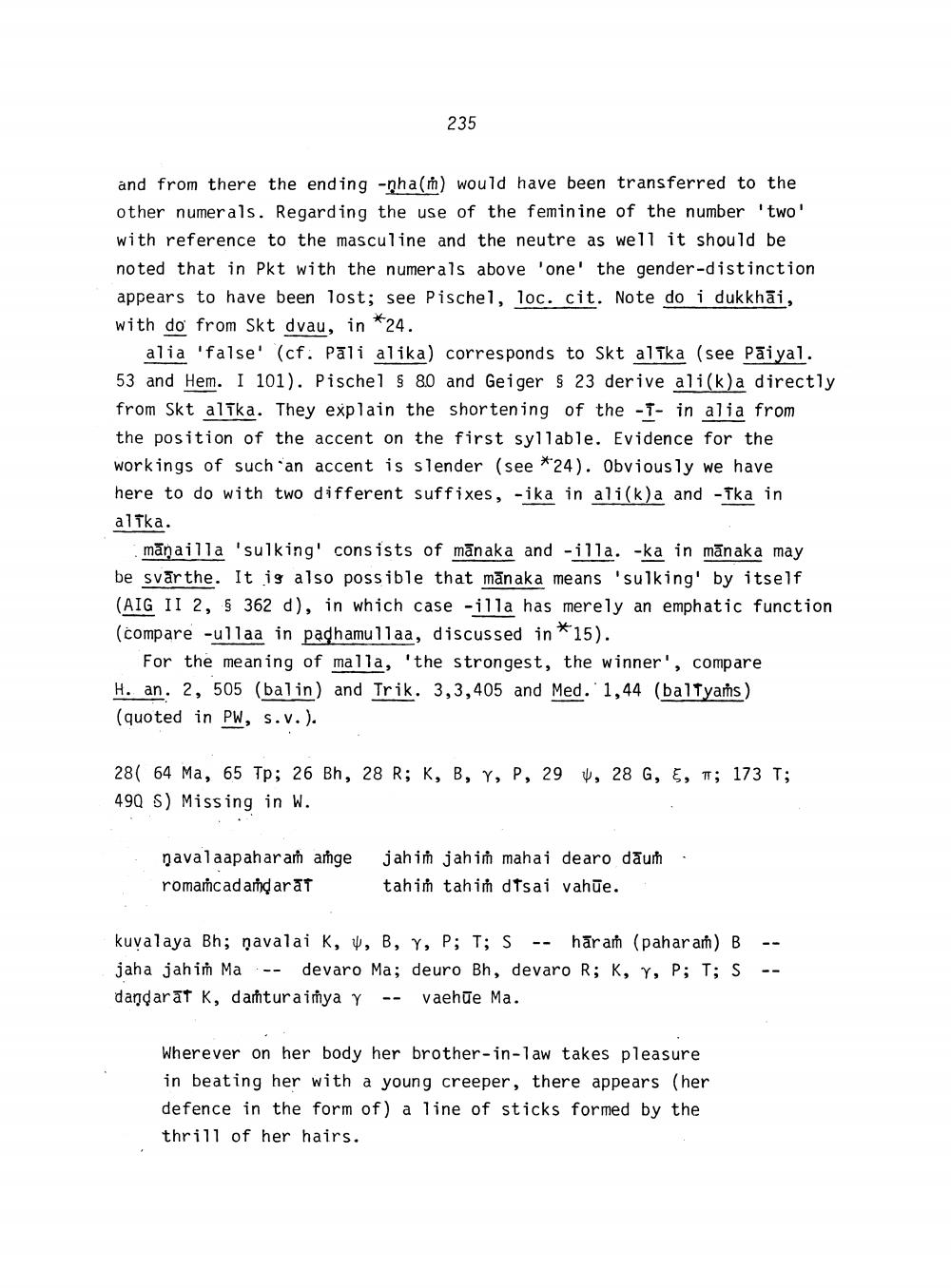________________
235
and from there the ending -nha(m) would have been transferred to the other numerals. Regarding the use of the feminine of the number 'two' with reference to the masculine and the neutre as well it should be noted that in Pkt with the numerals above 'one' the gender-distinction appears to have been lost; see Pischel, loc. cit. Note do i dukkhãi, with do from Skt dvau, in *24.
alia 'false' (cf. Pāli alika) corresponds to Skt alska (see Pāiyal. 53 and Hem. I 101). Pischel $ 80 and Geiger § 23 derive ali(k)a directly from Skt alTka. They explain the shortening of the -T- in alia from the position of the accent on the first syllable. Evidence for the workings of such an accent is slender (see *24). Obviously we have here to do with two different suffixes, -ika in ali(k)a and -Tka in altka.
mānailla 'sulking' consists of mānaka and -illa. -ka in mānaka may be svārthe. It is also possible that mānaka means 'sulking' by itself (AIG II 2, § 362 d), in which case -illa has merely an emphatic function (compare -ullaa in padhamullaa, discussed in *15).
For the meaning of malla, 'the strongest, the winner', compare H. an. 2, 505 (balin) and Trik. 3,3,405 and Med. 1,44 (baltyaṁs) (quoted in PW, s.v.).
, 28 G, 5, T; 173 T;
28( 64 Ma, 65 Tp; 26 Bh, 28 R; K, B, Y, P, 29 490 S) Missing in W.
.
navalaapaharań age romańcadarndarat
jahin jahin mahai dearo daun tahin tahi dtsai vahūe.
kuvalaya Bh; navalai K, 4, B, Y, P; T; S -- hārań (paharan) B jaha jahim Ma -- devaro Ma; deuro Bh, devaro R; K, Y, P; T; S dandarat K, dastur aimya Y -- vaehūe Ma.
-- --
Wherever on her body her brother-in-law takes pleasure in beating her with a young creeper, there appears (her defence in the form of) a line of sticks formed by the thrill of her hairs.




